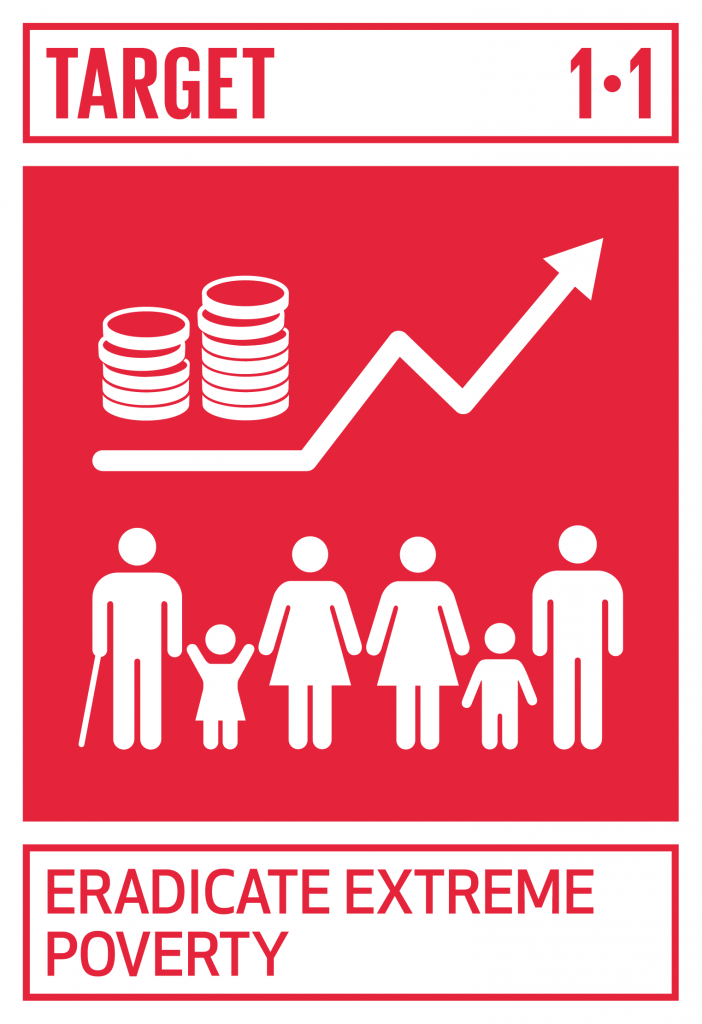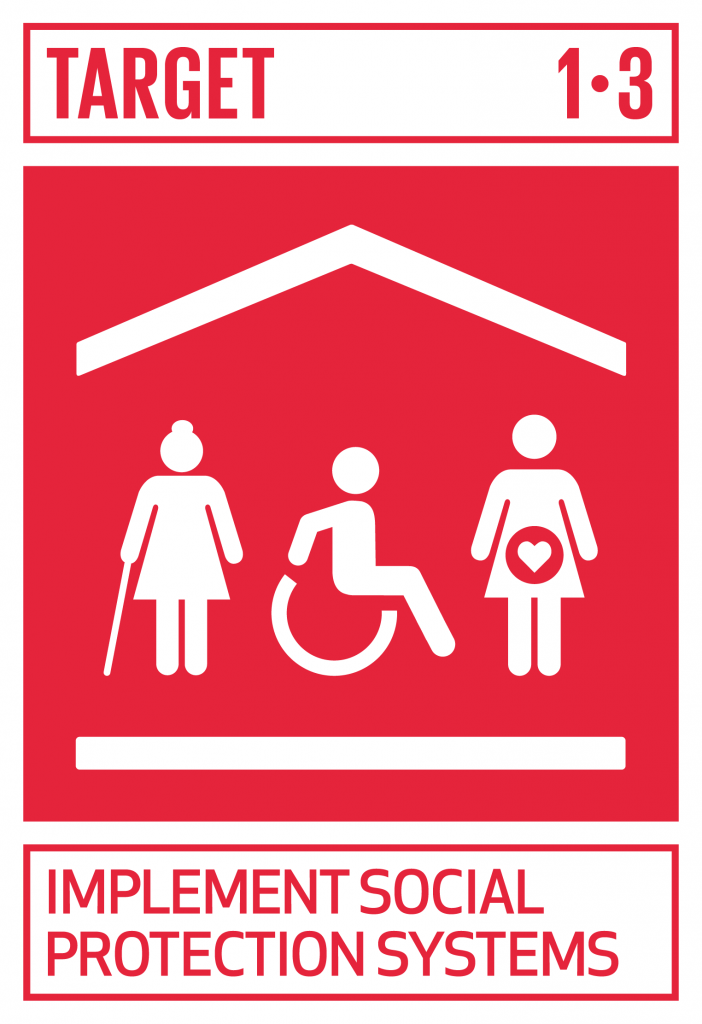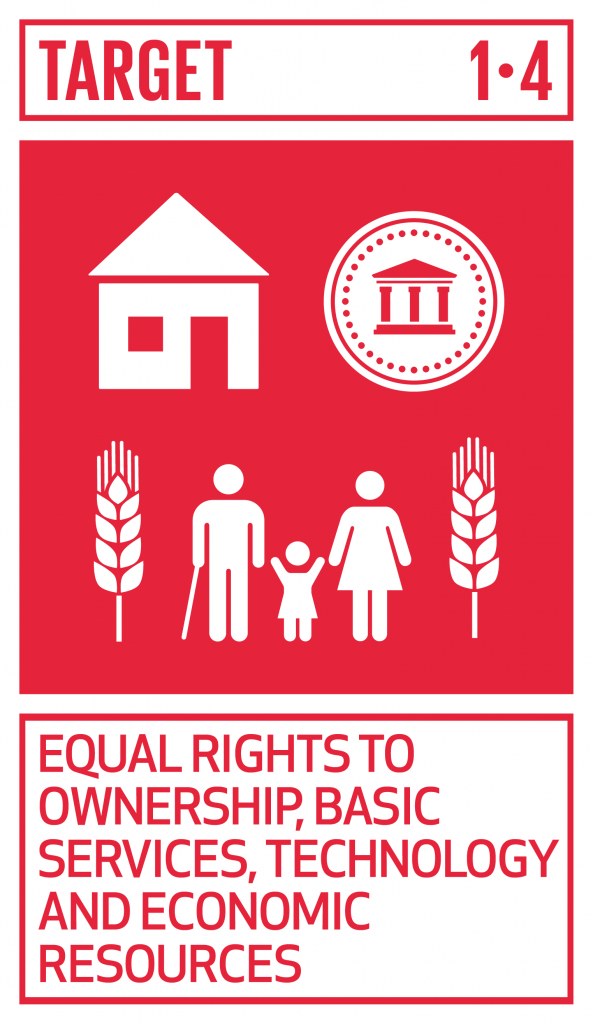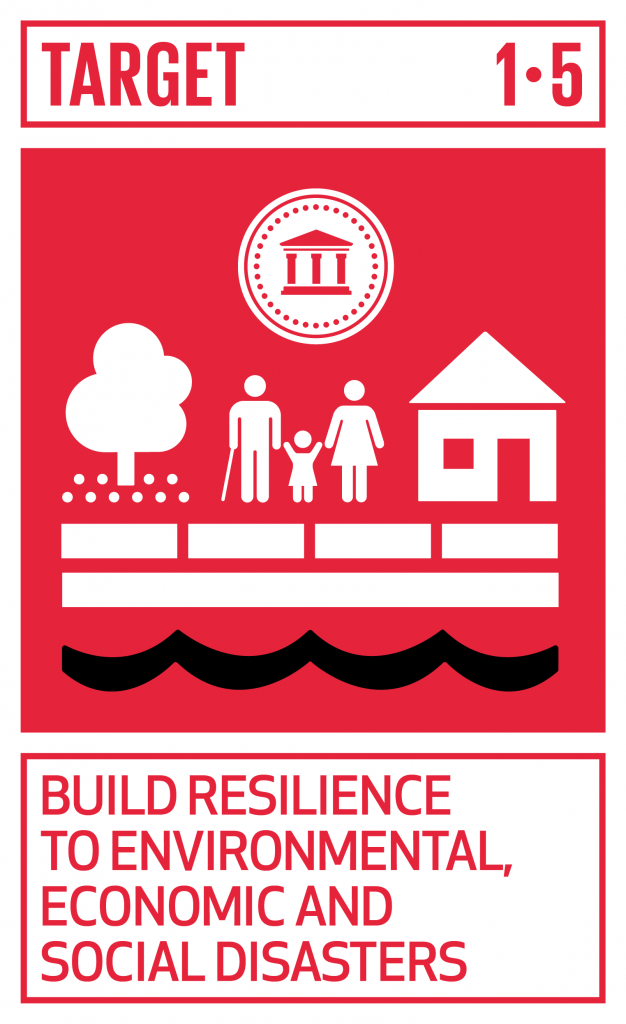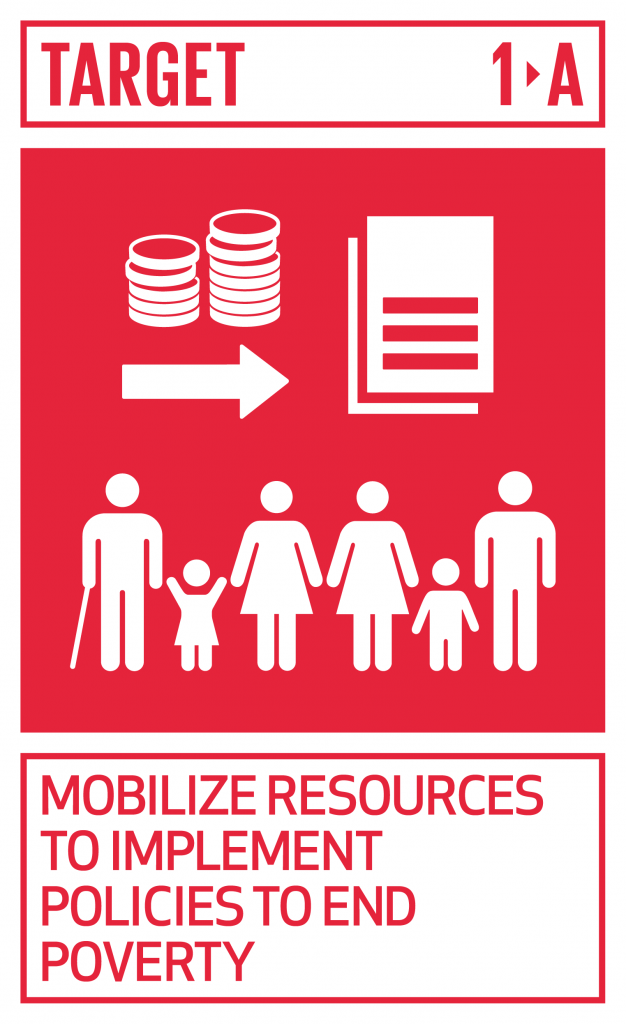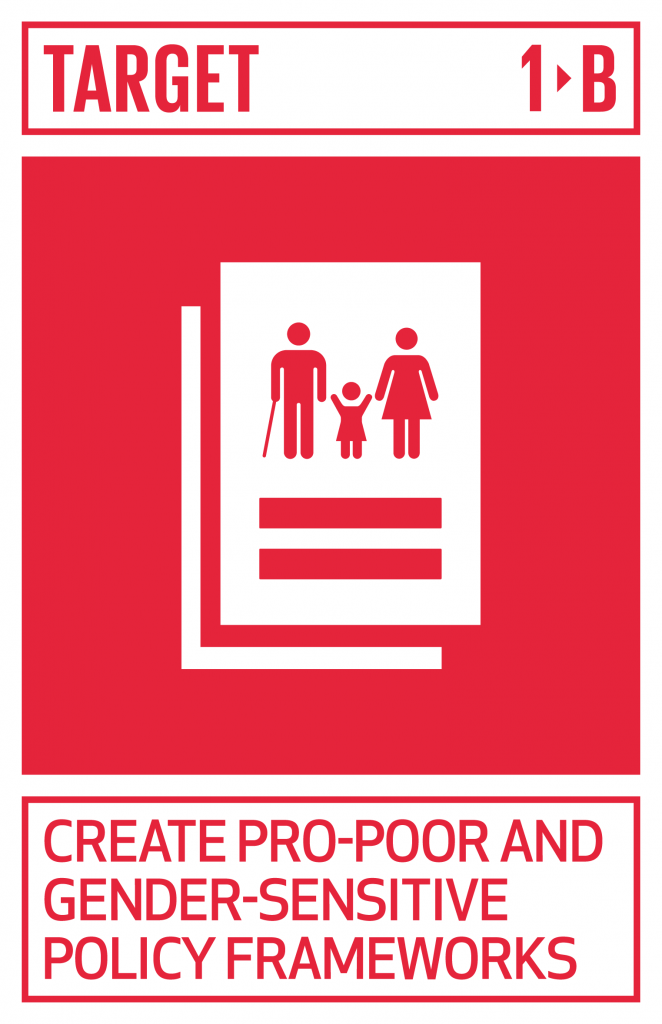SDG 1 – “End poverty in all its forms everywhere” – is made up of seven targets and 14 indicators. It covers not only income-based measures of poverty (1.1, 1.2) but also other dimensions (1.2), including access to social protection (1.3) and basic services (1.4), economic resources (1.4), and resilience (1.5). The two means of implementation indicators focus on the mobilization of resources (1.A) and the development of pro-poor and gender-sensitive policies (1.B).
In keeping with the 2030 Agenda’s theme of leaving no-one behind, several indicators for SDG 1 refer to vulnerable groups. These include women and children, unemployed persons, older persons, persons with disabilities, pregnant women, newborns, work-injury victims and the poor. This means that for some indicators a high level of data disaggregation will be required.
SDG 1 was reviewed at the 2017 High-Level Political Forum, along with SDGs 2 (Zero hunger), 3 (Good health and well-being), 5 (Gender equality), 9 (Industry, innovation, and infrastructure) and 14 (Life under water). SDG 17 (Partnerships to achieve the goals) is reviewed annually.
Context
SDG 1 parallels the first of the earlier Millenium Development Goals (MDGs) but aims to go much further. The MDG target was to halve extreme poverty on an income-based definition, then defined as less than $1.25 a day. Now, as the cost of living has evolved over time, extreme poverty means making less than $1.90/day.1 However, for the SDGs, the transition to this new definition has not been smooth. The official Target 1.1 uses the old definition, but the metadata uses the current international poverty line.2 In addition, national definitions vary; for instance, Cambodia still uses the $1.25/day measure.3
SDG 1 and the 2030 Agenda use a multidimensional definition of poverty to expand on the MDG agenda.4 SDG 1 tracks not only income-based poverty, but other dimensions as well, including the social and the cultural. A Multidimensional Poverty Index (MPI) has been developed by the Oxford Poverty and Human Development Initiative and UNDP, to be used for measuring SDG 1.2. The MPI assesses poverty at an individual level on three dimensions of poverty other than income: health, education, and living standards.5
This multidimensional approach to poverty requires addressing multiple factors as an interconnected whole. These include inclusive growth (SDGs 8 and 12), livelihoods and decent work (SDG 8), social protection (SDGs 1 and 16), access to basic infrastructure and services (SDGs 6 and 7), food security (SDG 2), nutrition (SDG 2), health (SDG 3), education (SDG 4), empowerment of women and girls (SDG 5), environmental sustainability (SDGs 13, 14, and 15), governance (SDG 16) and more equitable access to opportunities and distribution of income and wealth (SDG 10).6
Regionalisation, localisation
Poverty reduction remains a high priority for ASEAN countries.7 This is because despite notable success in attaining the MDG poverty targets, a significant number of people remain poor or at risk of falling back into poverty.8 Inequalities persist, especially within countries; in fact, Southeast Asia is the only subregion struggling with increasing inequality.9 For instance, almost three times as many poor people in Lao PDR and Vietnam live in rural areas than in urban areas (data unavailable for Cambodia and Thailand).10 This disproportionately affects women – they take on an increasing share of work for subsistence and income generation with limited access to resources while still doing chores, taking care of children and the elderly and participating in community activities.11
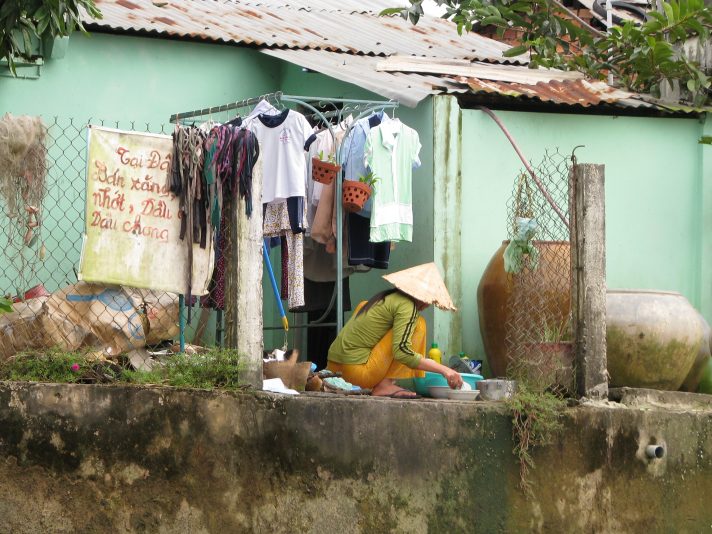
Women, like this Vietnamese woman, are disproportionately responsible for taking care of children, cooking, cleaning, getting clean water and other carrying out other household and community activities. Image by McKay Savage, Wikimedia Commons. Licensed under CC BY 2.0.
Poverty reduction is also hampered by economic realities. As economic growth slows and poverty rates fall, each dollar invested has a declining impact. Thus, progress in poverty reduction may be harder to achieve because what remains is more entrenched.12 Economic growth can no longer be relied upon as the main tool for poverty eradication.
Instead, change must also be systemic. This has been recognized and repeated by the UN’s Economic and Social Commission for Asia and the Pacific (ESCAP), the coordinating agency for the Asia-Pacific region, which the Lower Mekong countries (LMCs) are part of. National-level change must ensure inclusive development and policy coherence, with poverty defined in a multidimensional manner.13 This is key because poverty reduction strategies focusing only on increasing income can miss important parts of the picture. For example, a country like Cambodia has relatively low income poverty rates but relatively high multidimensional poverty rates.14 Cambodia’s needs will thus vary greatly from a country like Lao PDR, where both income poverty and multidimensional poverty is high.15
Poverty is exacerbated by armed conflicts and environmental disasters. This is particularly the case for Myanmar and Thailand, although all of the LMCs are expected to be disproportionately impacted by climate change.16 Nationally-appropriate policies that are pro-poor and take into account vulnerable groups including women, children and the poor in remote locations are one systemic way of addressing the issue (SDG 1.B). Increasing social protections (SDG 1.3) is another.17
Social protection should ideally be organized along nine areas: medical care, sickness, maternity, old-age, work injury, invalidity, survivors, family allowances and unemployment.18 The availability of protection in these areas varies widely in the LMCs. Thailand had a Universal Coverage Scheme in 2015 covering all nine areas, while Lao PDR and Vietnam had statutory programs in seven of the nine areas.19 In the same year, Myanmar had only four active statutory programs, and Cambodia lagged quite far behind with only one active programme, for work injury.20 In addition, what is available on paper is not necessarily accessible to all. For instance, even though Thailand has universal health care, elderly people living in rural areas lack the transportation to access the medical services that are theoretically available to them.21
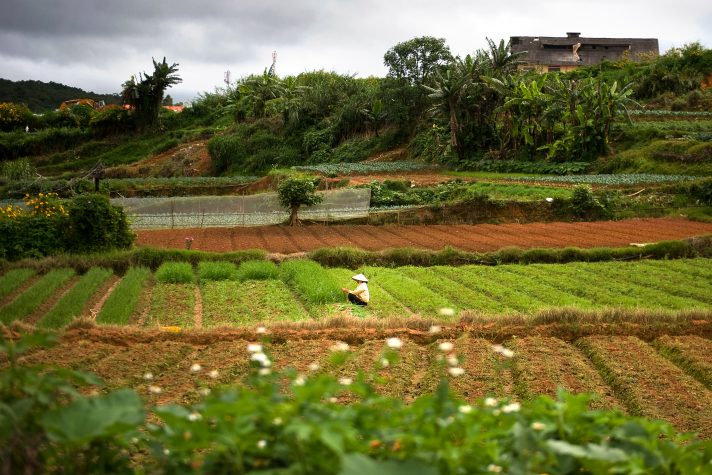
Those living in rural areas do not have the same level of access to basic services as those living in urban areas or the rich. Image by D. Myles Cullen, U.S. Army, Wikimedia Commons. This image is a work of a U.S. Army soldier or employee, taken or made as part of that person’s official duties. As a work of the U.S. federal government, the image is in the public domain.
Regional cooperation is a necessary complement to national-level changes. One reason is that it will help to limit international influences that can exacerbate rural poverty within a country, such as by cooperating on smoothening agricultural product fluctuations, impacting food security.22 Another area for regional cooperation is analysis and advocacy to address inequalities, reduce poverty and enhance social protection to build socioeconomic resilience.23
ASEAN has committed to “eliminate if not reduce poverty significantly”24 in its 2025 Blueprint, and the ASEAN Vision 2025 shows strong overlap with SDG 1.25 The multidimensionality of poverty is acknowledged.26 ASEAN also recognizes the disparity in poverty between urban and rural people in the Framework Action Plan on Rural Development and Poverty Eradication 2016–2020.27 ASEAN is also working towards providing social protection benefits for all of its people, adopting the ASEAN Declaration on Strengthening Social Protection in 2013.28
Means of implementation
The two means of implementation indicators focus on the mobilization of resources (1.A) and the development of pro-poor and gender sensitive policies (1.B).
Realizing SDG 1 will require considerable financial resources. Resource mobilization strategies will need innovation and careful consideration, given greater uncertainty in official development assistance (1.A.3) and foreign direct investments. In addition, countries need to use existing resources more effectively, prioritizing areas such as inclusive and sustainable infrastructure, education, health, sanitation, urban renewal and institutional capacity development (1.A.2). Countries will also need to generate their own resources (1.A.1), such as by strengthening tax administration. Microfinance institutions and other inclusive financing mechanisms may also be useful. Data are available only for SDG 1.A.2 and, as at July 2018, metadata has not yet been made available.29
Systemic change is also necessary to properly implement SDG 1. Although it is on the agenda, neither methodology nor official data for SDG 1.B.1 are as yet available.
Follow up and review, monitoring and evaluation
The monitoring and evaluation framework for SDG 1 has undergone a number of changes since its launch. The first iteration of SDG 1 indicators had 12; the current list comprises 14. The latest additions are Indicators 1.5.2 and 1.A.3.
Monitoring for SDG 1 continues to be characterized by uncertainty. According to the tier classifications, globally official data exists for less than half of the indicators (1.1.1, 1.2.1, and 1.5.3); this also applies regionally.30 Seven are well-developed methodologically (1.2.2, 1.3.1, 1.4.2, 1.5.1, 1.5.2, 1.5.4, 1.A.2). However, custodian agencies are still waiting for three of the four remaining indicators (1.A.1, 1.A.3, 1.B.1).
| Indicator | Tier | Custodian Agency | Notes |
|---|---|---|---|
| 1.1.1 | I | World Bank | -- |
| 1.2.1 | I | World Bank | -- |
| 1.2.2 | II | National Gov. | -- |
| 1.3.1 | II | ILO | -- |
| 1.4.1 | III | UN Habitat | Methodological work was expected to be completed by October 2017 but the IAEG-SDGs has not yet approved this work |
| 1.4.2 | II | World Bank, UN-Habitat | -- |
| 1.5.1(Number of deaths, missing persons and directly affected persons attributed to disasters per 100,000 population) | II | UNISDR | Same as 11.5.1 and 13.1.1 |
| 1.5.2 (Direct economic loss attributed to disasters in relation to global gross domestic product (GDP)) | II | UNISDR | This indicator was added to the original list |
| 1.5.3 (Number of countries that adopt and implement national disaster risk reduction strategies in line with the Sendai Framework for Disaster Risk Reduction 2015–2030) | I | UNISDR | Same as 11.B.1 and 13.1.2 |
| 1.5.4 (Proportion of local governments that adopt and implement local disaster risk reduction strategies in line with national disaster risk reduction strategies) | II | UNISDR | Same as 11.B.2 and 13.1.3 |
| 1.A.1 (Proportion of domestically generated | III | pending | No workplan has been received yet because the custodian agency is pending |
| resources allocated by the government | |||
| directly to poverty reduction programmes) | |||
| 1.A.2 (Proportion of total government | II | Under discussion between ILO, UNESCO-UIS, WHO | Metadata not yet available from custodian agency |
| spending on essential services (education, | |||
| health and social protection)) | |||
| 1.A.3 (Sum of total grants and non-debt-creating inflows directly allocated to poverty reduction programmes as a proportion of GDP) | III | pending | This indicator was added to the original list. |
| No workplan has been received yet because the custodian agency is pending | |||
| 1.B.1 | III | pending | No workplan has been received yet because the custodian agency is pending |
Chart created by ODM July, 2018. CC BY SA 4.0. Data source: IAEG-SDGs. May, 2018. Tier Classification for Global SDG Indicators. Accessed July 10, 2018.
The data outlook for the LMCs is not strong. Data for two of the Tier I indicators (1.1.1, 1.2.1) are not recent – for example, for SDG 1.1.1 the most recent years of available data range from 2014 for Thailand to 2005 for Myanmar. In addition, the data are not disaggregated to all the necessary values. Data for the other Tier I indicator, 1.5.3, only exists for Vietnam and Thailand, and only for the year 2015.
It is important to note that country data for SDGs 1.2.1 and 1.2.2, which are defined nationally using varying methodologies and definitions of national poverty lines, are not comparable.31
For the LMCs, four of the seven Tier II indicators (1.3.1, 1.5.1, 1.5.2, 1.a.2) have data, although their availability is not consistent across countries. For instance, there are no data on Thailand for SDGs 1.5.1 or 1.5.2, and data on 1.a.2 are not very recent (the most recent, for Lao PDR only, are from 2014). Depending on the disaggregation value, data availability on SDG 1.3.1 varies widely in terms of what countries have submitted data and the recency of the data.
This lack of data is a problem not only for monitoring the SDGs, but also for building effective, nationally-appropriate poverty-reduction strategies. Information on income poverty (1.1.1 and 1.2.1) is only part of what is needed.32 For the ASEAN subregion, factors such as educational status, health, access to services and infrastructure, vulnerability, social inclusion and access to social and financial capital will also need to be considered to fully understand how to best address the impacts of poverty.33 Development of the SDG 1 indicators corresponding to the multidimensional measures of poverty is crucial and should be considered an urgent priority.
References
- 1. World Bank. 2015. FAQs: Global Poverty Line Update. Accessed February 25, 2018.
- 2. World Bank. Metadata for Indicator 1.1.1: Proportion of population below the international poverty line, by sex, age, employment status and geographical location (rural/urban). Accessed February 28, 2018.
- 3. Ibid.
- 4. High Level Political Forum. 2017. 2017 HLPF Thematic Review of SDG 1: End Poverty in All its Forms Everywhere. https://sustainabledevelopment.un.org/content/documents/14379SDG1format-final_OD.pdf. Accessed July 3, 2018.
- 5. Oxford Poverty and Human Development Initiative. Global Multidimensional Poverty Index. Accessed July 5, 2018.
- 6. High Level Political Forum. 2017 HLPF Thematic Review of SDG 1: End Poverty in All its Forms Everywhere. https://sustainabledevelopment.un.org/content/documents/14379SDG1format-final_OD.pdf. Accessed July 5, 2018.
- 7. The ASEAN Secretariat. 2015. ASEAN Economic Community Blueprint 2025. Accessed February 25, 2018.
- 8. UNESCAP. 2017. Southeast Asia Subregion Challenges and Priorities for SDG Implementation. Accessed July 4, 2018.
- 9. UNESCAP. 2018. Asia and the Pacific SDG Progress Report 2017. Accessed July 3, 2018.
- 10. ADB. 2017. Key Indicators for Asia and the Pacific. Accessed July 6, 2018.
- 11. UNESCAP, ADB, UNDP. 2017. Eradicating Poverty and Promoting Prosperity in a Changing Asia-Pacific. Accessed July 3, 2018.
- 12. Ibid.
- 13. Ibid.
- 14. Ibid.
- 15. Ibid.
- 16. Ibid.
- 17. UNESCAP. 2017. Prospects for poverty reduction in Asia and the Pacific: Progress, opportunities and challenges, especially in countries with special needs. https://www.unescap.org/sites/default/files/E-ESCAP-CMPF1-2-E.pdf. Accessed July 5, 2018.
- 18. ILO. 1952. Convention No. 102: Social Security (Minimum Standards) Convention, 1952. Accessed February 27, 2018.
- 19. ILO. 2015. The State of Social Protection in ASEAN at the Dawn of Integration. Accessed February 27, 2018.
- 20. Ibid.
- 21. Osornprasop, Sutayut and Lars M. Sondergaard. 2016. Closing the Health Gaps for the Elderly: Promoting Health Equity and Social Inclusion in Thailand. Accessed February 27, 2018.
- 22. UNESCAP, ADB, UNDP. 2017. Eradicating Poverty and Promoting Prosperity in a Changing Asia-Pacific. Accessed July 3, 2018.
- 23. UNESCAP. 2017. Regional Roadmap for Implementing the 2030 Agenda for Sustainable Development in Asia and the Pacific. Accessed July 4, 2018.
- 24. ASEAN Secretariat. 2015. ASEAN Economic Community Blueprint 2025. Accessed February 25, 2018.
- 25. UN. 2017. Complementarities between the ASEAN Community Vision 2025 and the United Nations 2030 Agenda for Sustainable Development: A Framework for Action. Accessed July 4, 2018.
- 26. Ibid.
- 27. ASEAN Secretariat. 2017. ASEAN Framework Action Plan on Rural Development and Poverty Eradication 2016-2020. Accessed February 27, 2018.
- 28. ASEAN. 2013. ASEAN Declaration on Strengthening Social Protection. Accessed February 27, 2018.
- 29. UNSD. Metadata 1.A.2. Accessed July 5, 2018.
- 30. APFSD. 2018. Asia-Pacific SDG Data Availability Report. Accessed July 4, 2018.
- 31. ADB. Key Indicators for Asia and the Pacific. Accessed July 4, 2018.
- 32. UNESCAP, ADB, UNDP. 2017. Eradicating Poverty and Promoting Prosperity in a Changing Asia-Pacific. Accessed July 3, 2018.
- 33. UN. 2017. Complementarities between the ASEAN Community Vision 2025 and the United Nations 2030 Agenda for Sustainable Development: A Framework for Action. Accessed July 4, 2018.
